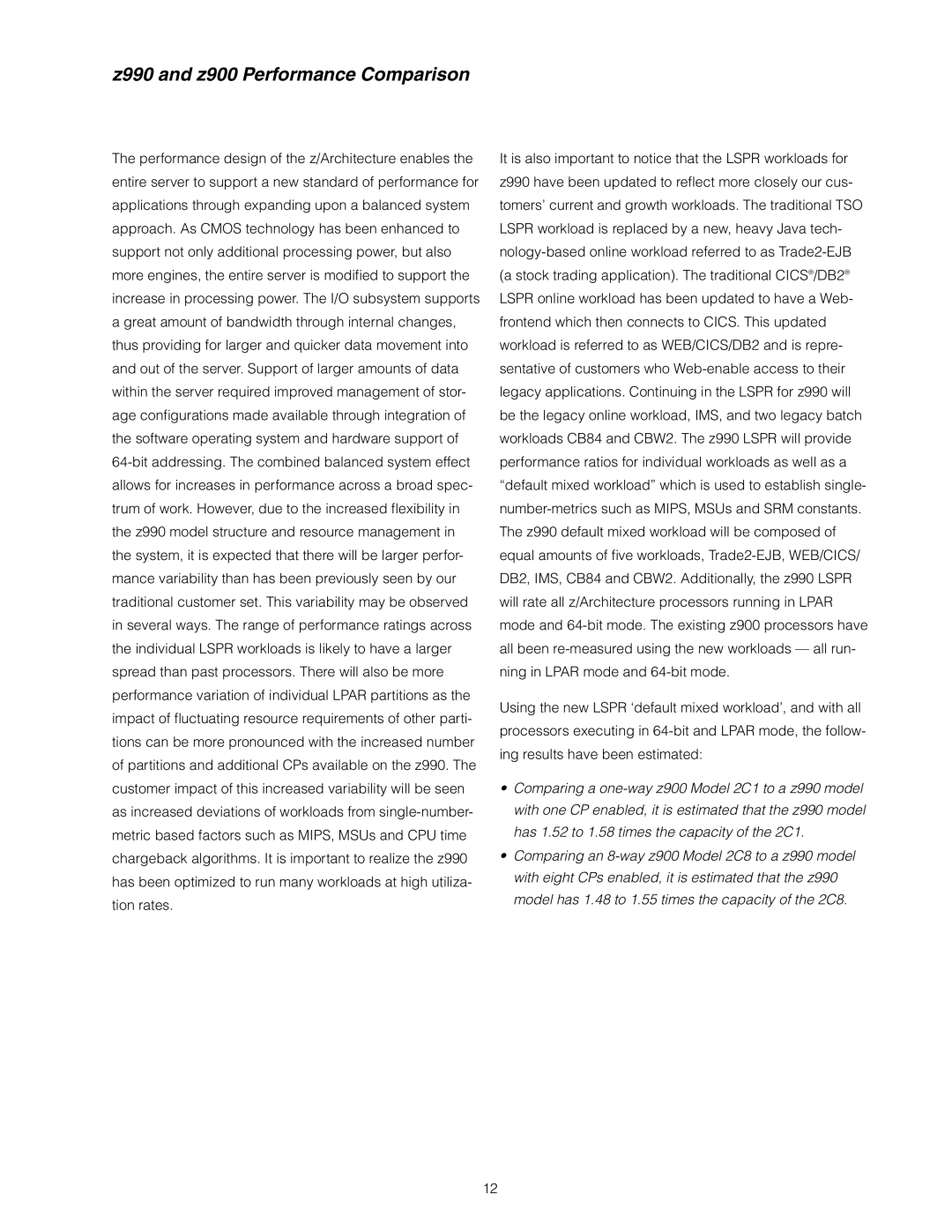z990 and z900 Performance Comparison
The performance design of the z/Architecture enables the entire server to support a new standard of performance for applications through expanding upon a balanced system approach. As CMOS technology has been enhanced to support not only additional processing power, but also more engines, the entire server is modifi ed to support the increase in processing power. The I/O subsystem supports a great amount of bandwidth through internal changes, thus providing for larger and quicker data movement into and out of the server. Support of larger amounts of data within the server required improved management of stor- age confi gurations made available through integration of the software operating system and hardware support of
It is also important to notice that the LSPR workloads for z990 have been updated to refl ect more closely our cus- tomers’ current and growth workloads. The traditional TSO LSPR workload is replaced by a new, heavy Java tech-
Using the new LSPR ‘default mixed workload’, and with all processors executing in
•Comparing a
•Comparing an
12
